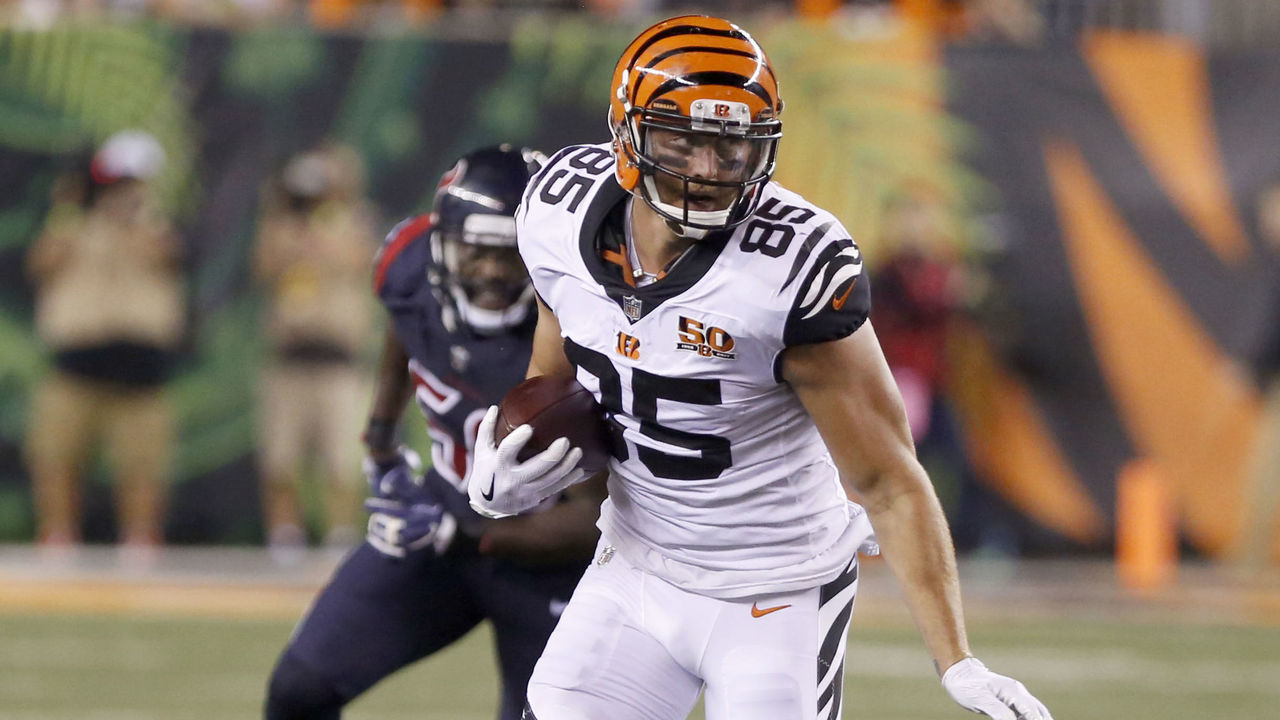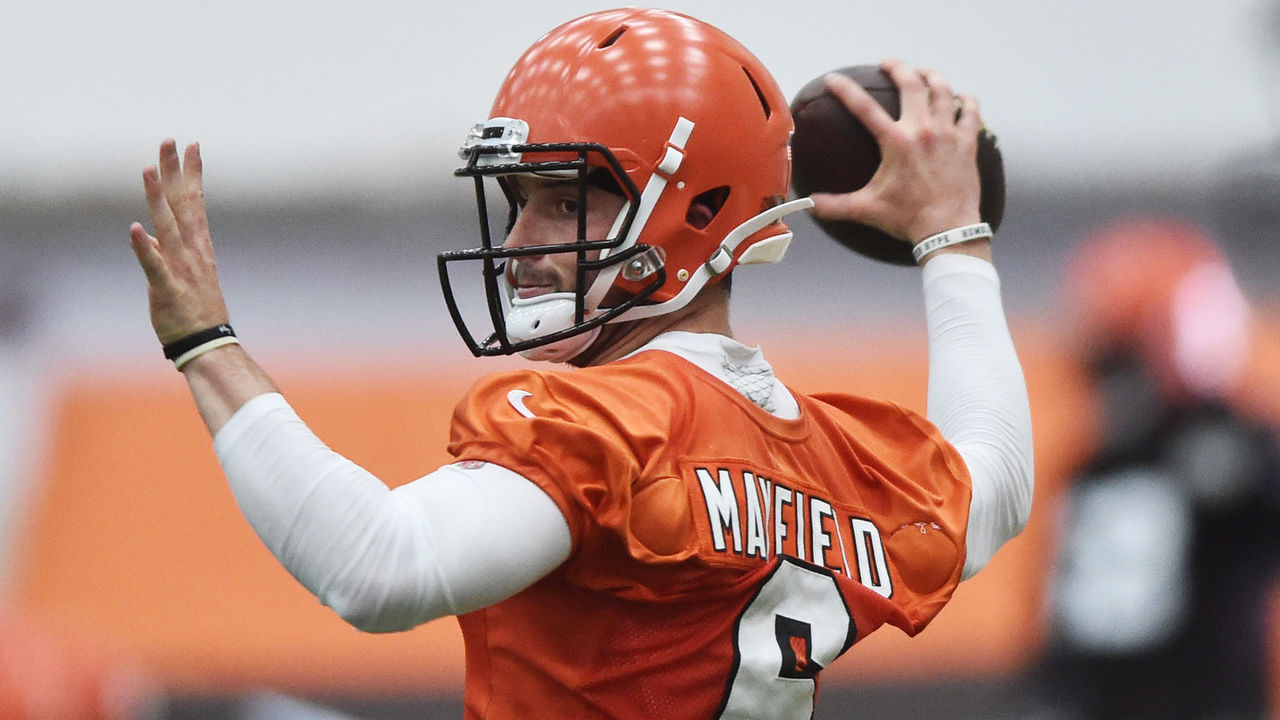Best and worst offseason moves by every team: AFC North
AFC
EAST | NORTH | SOUTH | WEST
NFC
EAST | NORTH | SOUTH | WEST
Baltimore Ravens
Best: Trading up to No. 32 to select Lamar Jackson

(Photo courtesy: Getty Images)
The Ravens traded up into the final pick of the first round to select Lamar Jackson, their quarterback of the future. Jackson was the most uncertain quarterback in this year's class but sports transcendent potential. It's possible the Ravens unearthed the NFL's next great star while taking a calculated risk few teams bothered to entertain.
Whether you want to view this move as a referendum on Joe Flacco or not, it's clear that the Ravens have built a contingency plan for the incumbent starter's inevitable decline. Jackson was one of the most electrifying college players of the past decade and betting on his limitless ceiling is the correct decision for a franchise trying to sustain a decade-plus of success.
Worst: Selecting Hayden Hurst No. 25 overall
If the Jackson pick was an absolute slam-dunk, the Hurst selection serves as diametrically opposite. Hurst will be 25 by the time the regular season begins. It was a poor use of draft capital that was glossed over in the wake of their decision to choose Jackson.
If the selection by itself wasn't bad enough, the Ravens doubled down and selected fellow tight end Mark Andrews in the third round. What if Andrews supplants Hurst immediately, or worse, neither of them meet expectations? Baltimore has been looking for a solid tight end since Todd Heap left in 2010 but this was a probable over-correction.
Cincinnati Bengals
Best: Re-signing Tyler Eifert to one-year, $5.5-million deal

(Photo courtesy: Action Images)
It would be a cop-out to say the Bengals didn't make a single good move during the summer, so we award them points for making a pragmatic, cost-effective re-signing.
Eifert's entire career has been marred by injuries but when he's been healthy, the 28-year-old has shown glimpses of star potential, best exemplified by his 13-touchdown season in 2015. If he can somehow remain on the field, Eifert may serve as one of the focal points of the offense. It's a show-me deal for a player who once was believed to be among the NFL's best tight ends.
Worst: Trading the No. 12 pick for No. 21 pick, Cordy Glenn
Where to begin in a disastrous offseason for the Bengals? One could've picked several moves but ultimately mortgaging some draft capital proved to be their worst move. Cincinnati traded the No. 12 and No. 158 picks for No. 21 (used on center Billy Price), No. 187 and Cordy Glenn, a league-average tackle who hasn't played a full year since 2015.
Cleveland Browns
Best: Finally addressing their quarterback woes with real infrastructure

(Photo courtesy: Action Images)
The Browns' perennial woes at quarterback are such a running joke that even non-football fans understand it. This is finally the year the Browns stop being a punchline, however, after they acquired Tyrod Taylor in exchange for a third-round pick, then used the No. 1 pick in the draft on Baker Mayfield. Mayfield can afford to develop at a correct pace while Taylor continues to be a functional, if above-average starter as the Browns look to finally escape the AFC North basement.
Taylor can elevate a historically dreadful Browns team to respectability, while Mayfield effectively gets a redshirt year. If Mayfield proves to be ready and the Browns' coaching staff has learned from its mistakes of yesteryear (aka rushing undeveloped talent into the fray), then the pieces are in place for the Browns' eventual rise. Well done, John Dorsey.
Worst: Retaining Hue Jackson as head coach
Jackson was retained after posting an 0-16 season. There isn't really much to this one, a baffling decision by the Browns' management to reward such blatant incompetence. If the argument in favor of Jackson is that his team was bereft of talent, then why even bother taking the field? The Browns were expected to be bad but not winless, and keeping Jackson is an act of bad faith.
Pittsburgh Steelers
Best: Signing Morgan Burnett to three-year deal

(Photo courtesy: Getty Images)
Burnett isn't going to awaken casual fan interest but he's always been a very good safety and provides the secondary with veteran leadership and stability. The 29-year-old is a strong tackler in the open field, can play either as a box safety or fit a more traditional mold. In any event, it allows the Steelers to operate with more confidence in their scheme going forward.
It's not the deal that most Steelers fans will remember this summer by, but it may end up being their most impactful move in trying to reach the Super Bowl this winter.
Worst: Selecting Terrell Edmunds No. 28 overall
There are plenty of reasons to believe that Edmunds will be a very good player in the NFL. He would've been readily available much later in the draft, however, and the Steelers ought to be panned for what was unanimously considered a major reach.
Edmunds is gifted with excellent speed for his size and could serve as another versatile piece in the secondary, but he relies exclusively on his athleticism. Time will only tell whether the Steelers made the right call, but patience is indeed a virtue.